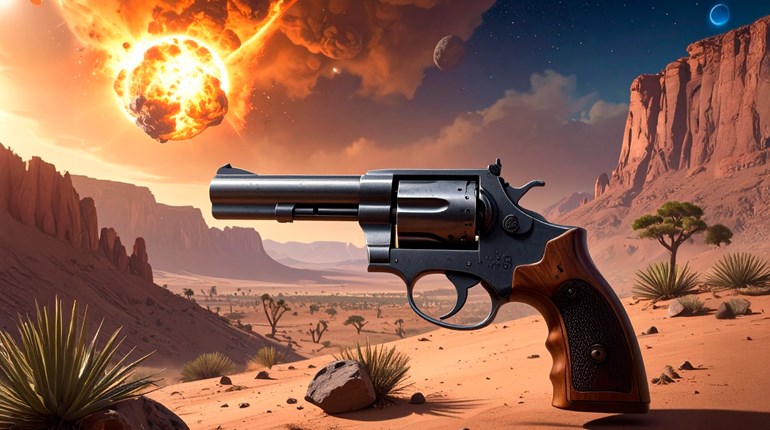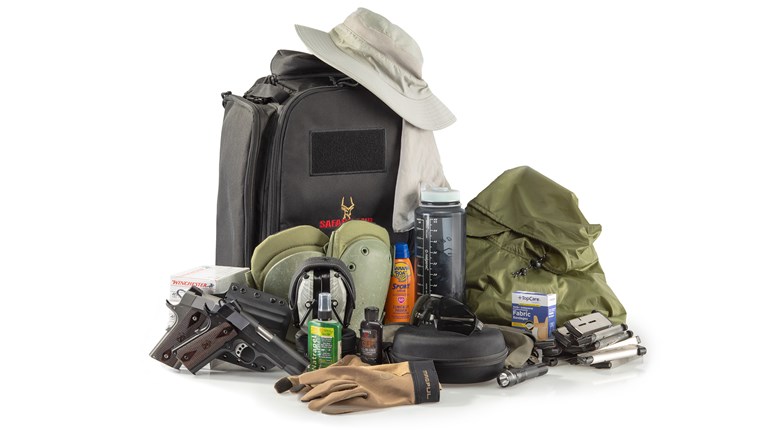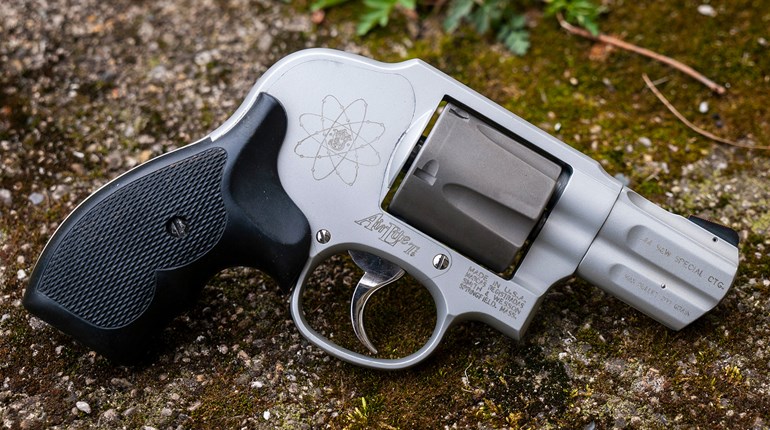
In my ideal world, there wouldn’t be any problems encountered by anyone trying to carry around a normal-size service pistol on their daily rounds. The reality of things is much different, however.
Clothing styles, dress codes and the dreaded “soft NPE” (“Soft Non-Permissive Environment”) can make this impractical for many people. The latter is current internet-gun-forum jargon for a place where it’s not illegal to carry a gun, but there would be social repercussions to having one’s armed status discovered. From getting asked to leave a restaurant to possibly losing a job, these consequences are best avoided.
Due to these difficulties, the pocket pistol remains one of the most-popular handguns for CCW purposes. While bigger guns can be dressed around with enough effort, foresight and wardrobe alterations, it’s an awful lot of effort to do so, and it’s no surprise many will avoid that effort by dropping a tiny .380 ACP-chambered pistol in a DeSantis Nemesis holster into their pocket instead.
Before I go further, I should probably take a moment to define my terms. After all, “pocket pistol” has covered a lot of turf over the years. Smith & Wesson’s No. 2 Army was a “pocket pistol” in the days of 19th-century gentleman’s frock coats, and it’s got a 5- or 6-inch barrel. Similarly, Colt’s Model 1903 Pocket Hammer (as opposed to the Pocket Hammerless) was a gun about the size of a Colt Commander, so, obviously, Herculean pockets were still common in the early 20th century.
When I’m talking about “pocket pistols,” I’m referring to what were called “vest pocket” guns. While a J-frame or Glock G43 may find a home in a coat pocket or a sufficiently large pants pocket, true pocket guns tend to be much smaller. A “vest pocket” handgun would be one that is small and light enough to cause minimal printing in even fairly close-fitting attire.
The very smallest of these would be the tiny single-action revolvers, like those from North American Arms, and various small-caliber derringers and single shots.
While it’s probably not the most-popular opinion to hold, I think these guns, and their larger centerfire derringer brethren, are best relegated to use as range toys or for shooting side matches in Cowboy Action Shooting. These days there are many better options for pocket carry that are lighter, smaller, hold much more ammo, have better sights and don’t require manual thumb-cocking between shots. Nostalgia shouldn’t have a place in selecting a defensive tool.
Then there are the classic pocket guns, the .25 Autos. Once among the most-common forms of pocket pistol, these have been almost driven to extinction. Beretta still offers the Model 21A Bobcat, and specialists Precision Small Arms will sell you an exquisitely finished example of the little Baby Browning, but the arrival of the Kel-Tec P32 and P-3AT around the turn of the millennium pretty much put paid to this category of pistol. Also, while it pains me to admit it since I toted a little .25 ACP Beretta Jetfire for years, the .25 ACP is maybe the cartridge that most deserves its poor reputation for lack of terminal effectiveness. Even with hot FMJ ammo, penetration is marginal. We have far better options today.
The king of the pocket-pistol category nowadays is definitely the small, light, single-stack .380 ACP-chambered pistol.
These come in a variety of configurations and action types, and span a price range from a couple hundred bucks to several times that amount. There are true double-action-only versions, like the Smith & Wesson Bodyguard .380 I kept in a small breast pocket on the outside of my winter coat for years. The virtue of this action type is the ability to take another try at a recalcitrant primer by just pulling the trigger again. The vice of this action is they generally have heavier and harder-to-master trigger pulls.
A variant on that type of trigger is the one found on the Kel-Tec P-3AT and several other pistols of its sort. While superficially resembling a double-action-only trigger, this action uses the cycling of the slide to partially cock the gun. This gives a lighter trigger pull than the true DAO, since the shooter isn’t fighting the full weight of the mainspring, however, these guns also lack the repeat-strike capability of the true DAO.
Lastly, is the classic single-action with a thumb safety, as exemplified by SIG Sauer’s P238. This is obviously the most manageable of the triggers on these sorts of pistols. Carrying one in Condition One in a pocket, however, demands a quality holster and excellent gun-handling skills, and even then still makes some folks a little skittish.
There have been numerous attempts to get 9 mm-caliber pistols into, or at least close to, this size class, but so far it’s mostly been exotics like the now-defunct Rohrbaugh R9 and the Bond Arms Bullpup (née Boberg). The Kimber Micro 9 qualifies, but carries the same single-action caveat as the P238. For the foreseeable future, pocket concealed carry looks to be the province of the .380 ACP.



































